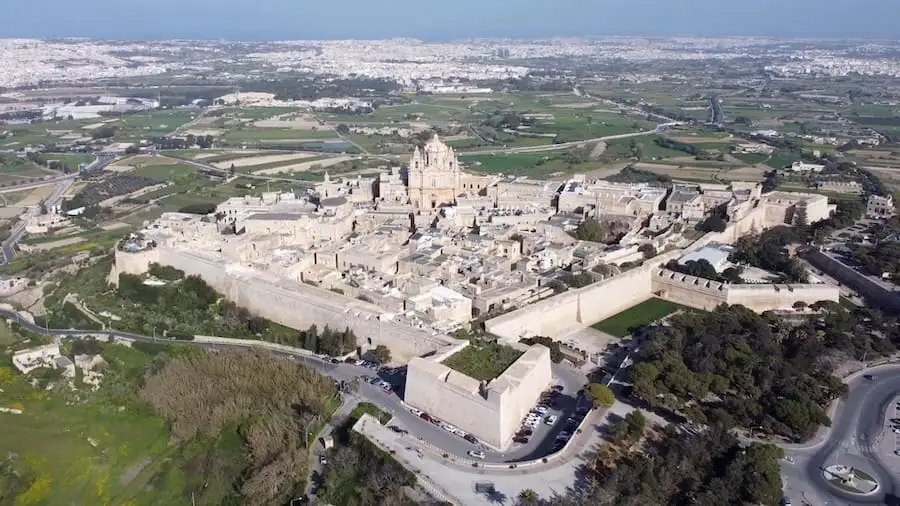


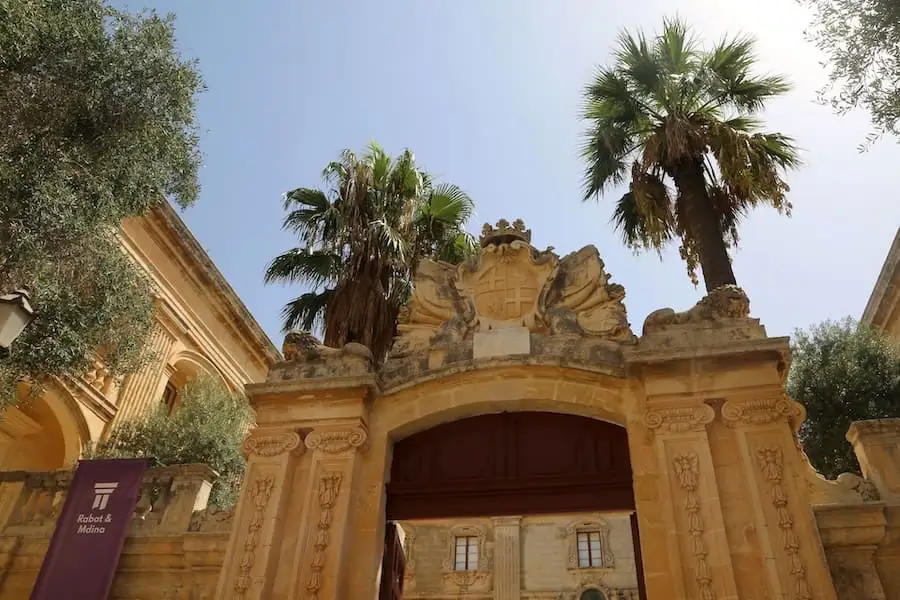
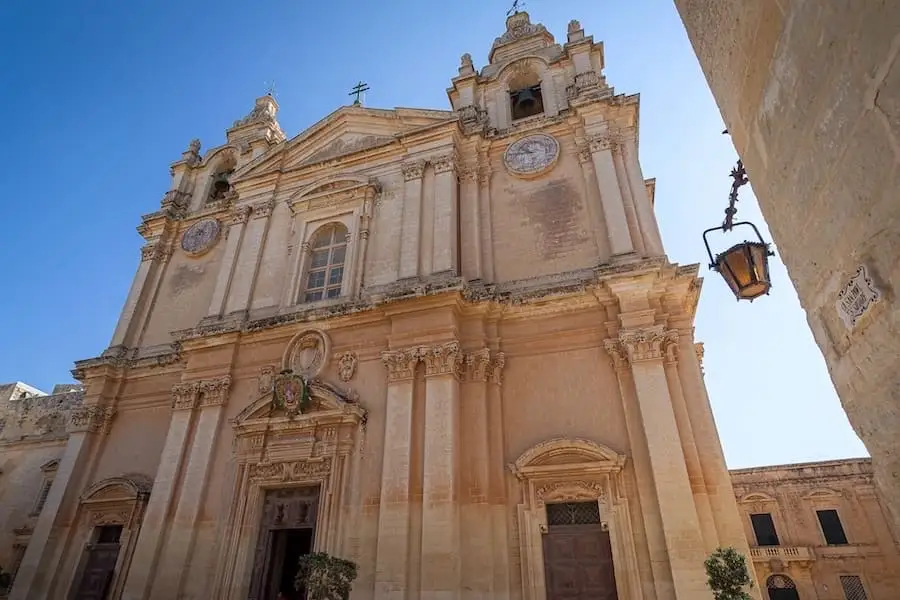
Mdina - The Silent City of Malta
Mdina, also known as the "Silent City," is the former capital of Malta. This fortified medieval city captures visitors' imagination with its timeless atmosphere. Explore its labyrinth of narrow streets with Arab influences, admire its imposing limestone buildings, and discover the countless cultural treasures it holds. Visiting Mdina is like traveling back in time, where every corner tells the stories of a rich past.
Mdina, the ancient capital of Malta
Located in the center of the island, this fortified city stands on a hill, offering panoramic views of the Maltese landscape. Mdina’s history dates back over 4,000 years, having been the stage for numerous historical and cultural events, from the Phoenicians to the Romans, from the Arabs to the Knights of the Order of St. John.
The city, founded in the 8th century BC by the Phoenicians under the name Maleth, was initially renamed Melite by the Romans. Under Roman rule, Mdina became the capital of Malta, due to its strategic position at the heart of the island.
It was later during the medieval period, notably under Arab rule from 870 until the Norman conquest in 1091, that Mdina acquired much of its urban and architectural character. The Arabs introduced new construction techniques as well as an urban plan favoring narrow streets and labyrinthine alleys, features that still define the unique character of Mdina today.
Over the centuries, Mdina underwent various modifications and reconstructions, notably after the earthquake of 1693, which led to a significant Baroque reconstruction of the city. Despite these changes, Mdina has preserved its medieval atmosphere, with its limestone buildings, ancient gates, and fortifications that bear witness to its historical past as a medieval city.
Mdina was for a long time the city where Malta’s noble and wealthy families lived, hence its former nickname “Noble City”. With the arrival of the Order of Malta in 1530, the importance of the city diminished in favor of La Valette, the current capital of Malta, which became more strategic due to its vast port. The city has retained its charm and now seems frozen in time, earning it the nickname “silent city” today.


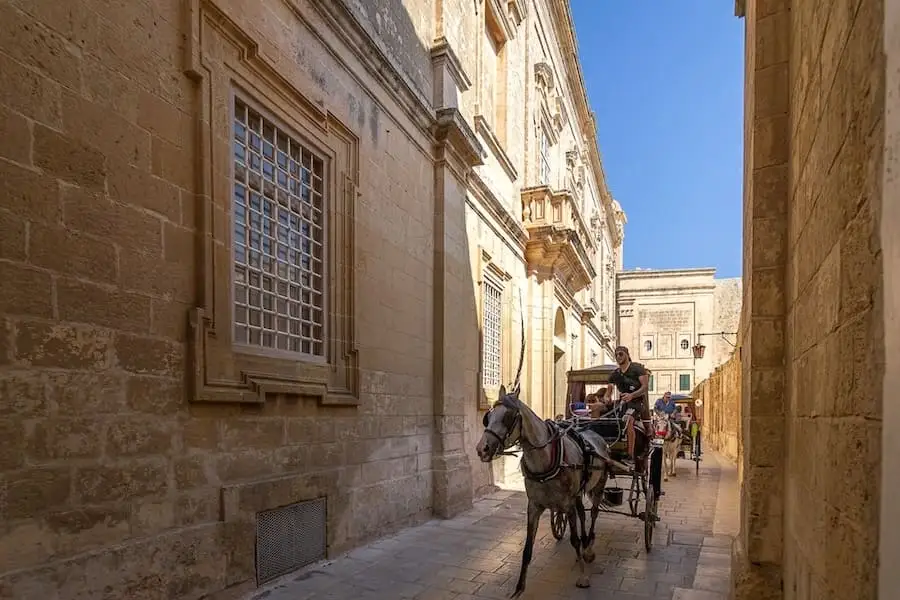
Where is Mdina located?
The city of Mdina is located in the central-west of Malta and borders Rabat. It is just 13 kilometers southwest of La Valette. Once a strategic position, it is now largely deserted by locals. In fact, Mdina is the least populated city in Malta, which earned it the nickname “the Silent City”. However, its unique character makes it one of the most popular tourist destinations in the archipelago, attracting many visitors eager to discover its cultural heritage.
How to get to Mdina?
Mdina is easily accessible by public transport, with a bus stop located just in front of the city entrance, only a 5-minute walk away. Inside the fortifications, vehicle access is restricted, except for a limited number of residents. It is therefore a city that is visited exclusively on foot.
From the La Valette terminus: you can take one of the following buses: 50, 51, 52, 53 or 56.
From the airport, bus 201 offers a long but interesting journey, or you can also take the X3.
From St. Julian’s, Sliema and Gzira: you can take the 202 without any changes.
You can find all the bus timetables on the official website of the Malta Public Transport.
What to see in Mdina?
Mdina is one of the must-see places in Malta, partly thanks to its unique ambiance which exudes a scenic quality with a mix of tranquility and serenity. Several emblematic sites in Mdina are worth discovering.
St Paul’s Cathedral
Founded in the 12th century, this majestic Baroque cathedral stands on the site where, according to legend, the Roman governor Publius met St Paul after his shipwreck in Malta.
The original cathedral was severely damaged during the Sicily earthquake of 1693, which led to its dismantling. It was later rebuilt in a Baroque style following the design of the Maltese architect Lorenzo Gafà.
Tickets to visit the cathedral are available at the Cathedral Museum, located to its right and just a few meters away. The admission price for adults is €10.00, while entry is free for children under 12.
Palazzo Falson
Palazzo Falson, formerly known as Palazzo Cumbo-Navarra, Casa dei Castelletti, and Casa Normande, is a medieval urban residence located in Mdina. Built around 1495, it is considered one of the oldest buildings in Mdina.
Originally, it was erected as a family residence by the Maltese nobility and bears the name of the Falson family. Today, the palace is open to the public as a museum-house, offering visitors the opportunity to explore seventeen rooms filled with historical household objects and various collections of antiques. Its walls feature tapestries, paintings, antique furniture, and a remarkable library containing rare volumes.
Vilhena Palace or National Museum of Natural History
Vilhena Palace is a Baroque architectural gem built between 1726 and 1728 according to the plans of the French architect Charles François de Mondion. This iconic building was erected at the initiative of Grand Master Antonio Manoel de Vilhena, who wanted to equip Mdina with a palace that could serve both as an official residence and an administrative center.
Since 1973, the palace has housed the National Museum of Natural History, which holds significant collections in fields such as geology, paleontology, botany, and entomology. Today, this museum is a center for research and education in Malta.
Strolling through the streets and viewing Mdina’s fortifications
Without a doubt, strolling in Mdina is one of the most rewarding ways to discover Malta’s vast historical and cultural heritage. Wandering through its narrow cobblestone streets, venturing into a maze of historic buildings, where every stone tells a story.
Mdina’s robust fortifications remind us of the important strategic role the city played over the centuries. The viewpoints along its walls offer spectacular panoramas of the island, from where one can glimpse the blue of the Mediterranean Sea in the distance.
Just outside these historic walls, you can discover the Howard Gardens, a green haven ideal for strolling, relaxing, or even enjoying an ice cream in complete tranquility.
Visiting Rabat


Finally, no visit to Mdina would be complete without visiting Rabat. The two cities, very close to each other, are small and can be easily explored in a single day. Visiting both Rabat and the Silent City (Mdina) while enjoying a pleasant stroll and discovering the historic corners each has to offer is a well-thought-out and optimized itinerary.
In Rabat, you can visit the Domus Romana, or Roman Villa, discovered in 1881 just outside Mdina. Built in the 1st century BC as an aristocratic residence within the Roman city of Melite, it is a place where one can admire mosaics, statues, and other exceptionally well-preserved Roman artifacts.
Furthermore, the famous Catacombs of St Paul and St Agatha are worth a visit. Part of an interconnected complex of passageways used throughout history for burying the dead and performing rituals, these catacombs are considered the cradle of Christianity in Malta. It was within them that the island’s first Christian community was established by the apostle St Paul, making this site of great historical and spiritual significance.
Visiting the Mdina Glass workshop
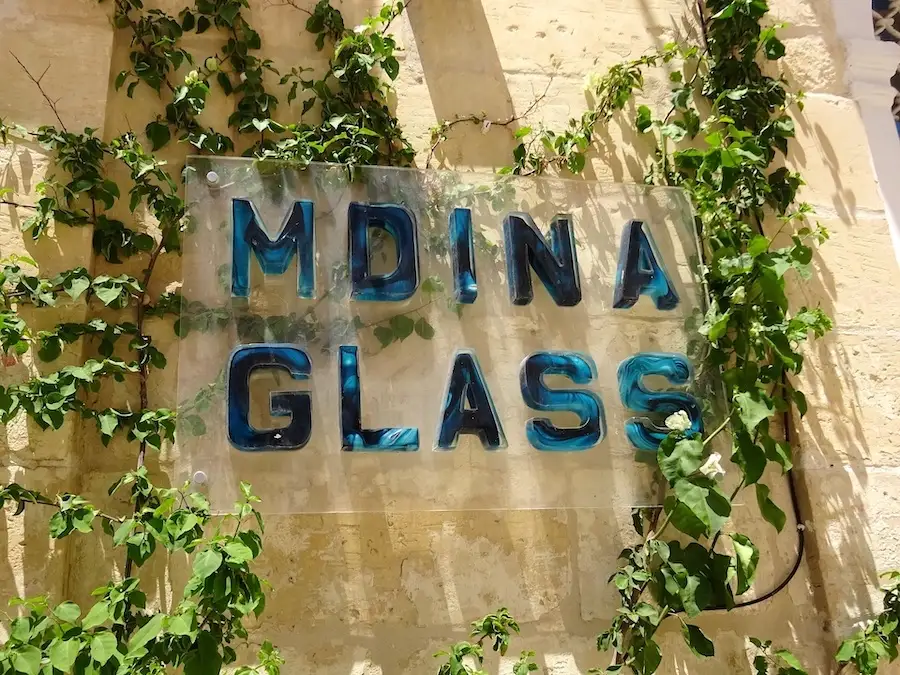

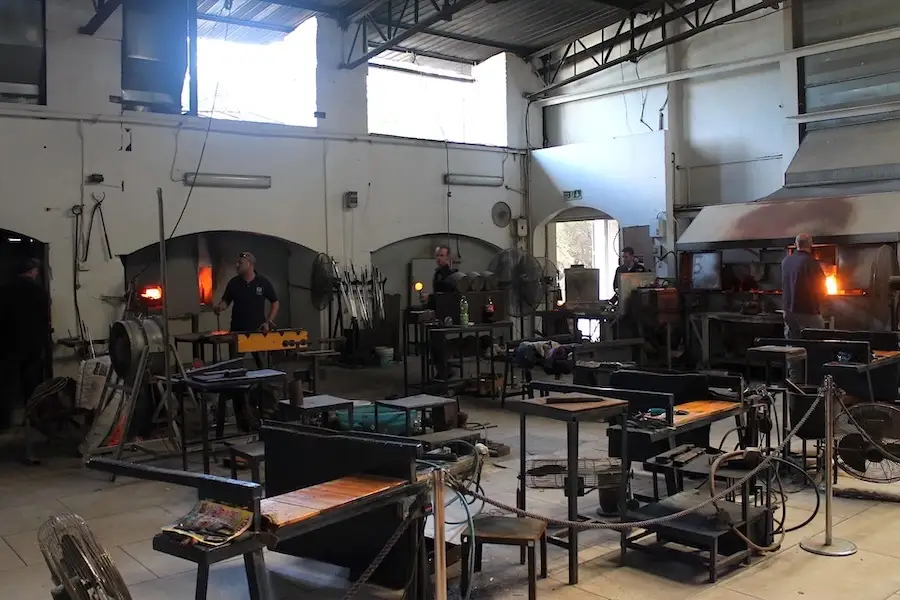

The Mdina Glass workshop in Ta’ Qali, although not located in Mdina itself, is a must-visit. It is just a five-minute drive from Mdina. There, you can watch master glassmakers in action, creating unique and handcrafted pieces.
Mdina Glass is a company dedicated to the creation of handcrafted glass pieces located in Malta. It perpetuates a centuries-old tradition by preserving ancient glass-making techniques passed down through generations.
Where to eat in Mdina?
Here are some of the recommended restaurants for dining in Mdina, which will satisfy a wide range of tastes and budgets.
Fontanella Tea Garden
The Fontanella Tea Garden is one of Mdina’s must-visit establishments. It is popular with both locals and tourists for its welcoming atmosphere and spectacular panoramic views. Located on the ancient walls of the fortified city, this café and tea garden offers a haven of tranquility. It is the ideal place to enjoy a break before continuing your tour of Malta’s ancient capital.
The menu at Fontanella Tea Garden is especially appreciated for its selection of teas, coffees, homemade cakes, and particularly its famous chocolate tart, which has won the hearts of all who have tasted it. In addition to sweet treats, it also offers some light meal options and snacks, perfect for any time of the day.
Don Mesquita
Don Mesquita is a charming bistro and wine bar located in the heart of Mdina, offering its visitors a unique gastronomic experience. The venue is popular for its “Maltese platter”, a typical Maltese dish offering a delicious combination of antipasti including: ġbejniet (sheep cheese, either fresh or matured), zaitun (olives), bigilla (chickpea paste), caponata of capers, and various types of local cured meats, such as Maltese salami.
De Mondion Restaurant
De Mondion, located at the top of Mdina’s walls, is the gastronomic restaurant of the luxurious hotel The Xara Palace Relais & Châteaux. One of Malta’s most prestigious gastronomic establishments, it has been rewarded, among other distinctions, with a Michelin star. Named in honor of the French architect Charles François de Mondion, who played a crucial role in Mdina’s Baroque design, this restaurant not only offers a top-notch culinary experience but also impressive panoramic views of the island.